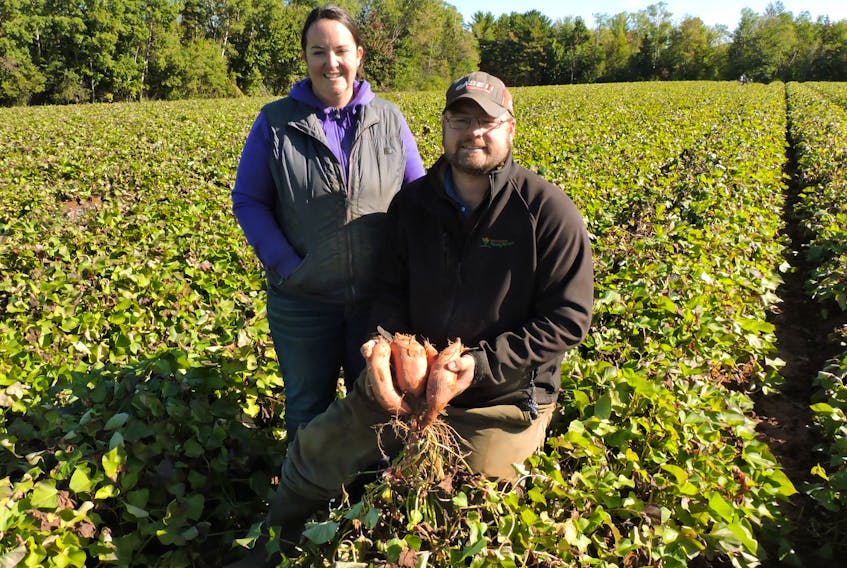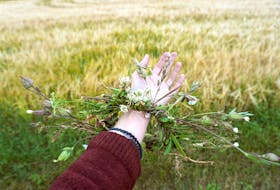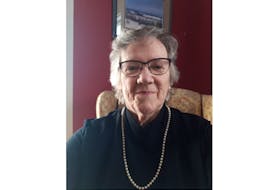LAKEVILLE, N.S. — When an eight-member production crew for the Real Farm Lives web series turned up at the Keddy Farm in the Annapolis Valley, with a van full of gear, Philip and Katie Keddy realized they were involved in a much bigger project than they’d imagined.
They are a second-generation farming couple, with Philip’s parents Charles and Doris handling much of the day-to-day business for the C.O. Keddy Nursery and Charles Keddy Farm in Lakeville. Philip thought being chosen to be profiled for the series sponsored by the agricultural trade association CropLife Canada would be a great way to explain what the farm does; raising strawberry plants, which are sold to berry harvesters across North America as well as having one of the biggest sweet potato crops east of Ontario.
But that was just the start of it.
“We’ve done small little projects in the past, usually with a cameraman and someone holding a sound recorder,” says Philip, sitting with Katie on the farmhouse porch in the middle of their 500-hectare spread. “But they had a director, and multiple cameras, lights and screens and a drone, just like they had on other farms across Canada.”
The latest episodes of Real Farm Lives, which went online this week at realfarmlives.ca, paint a broader picture of what goes into making a living from the earth and raising a family in a rural environment. Besides the grandparents and the parents, there’s also Philip’s and Katie’s sons Ben, who’s almost five, and Charles, nearly seven, to complete the family portrait.
“It was nice to see the boys in some of the footage, we were feeding the cattle and doing other things around the farm that we would normally do,” says Philip. “So it was nice to bring that family aspect to it and show the public that a lot of large-scale farms are still very much family based and not all huge corporations.

“There are still a lot of family farms out there and everyone, no matter what the age, is involved on a day-to-day basis.”
“People talk about it being a lifestyle, and not a job, and you can’t separate the two,” adds Katie. “I mean, you can try your hardest, but on a Sunday we may have plans, and it turns out that the cows are still out, and that becomes our day, rounding up cattle.
“I think the series shows how both become one, ultimately.”
More than a big red barn
Charles and Doris Keddy started farming here 43 years ago, and a lot has changed since then. Today, they employ dozens of local and offshore workers from Jamaica and Mexico to harvest, package and ship the strawberry plants and sweet potatoes, the latter crop becoming part of the farm after Philip graduated from college over 13 years ago.
Like the grapevines that have become a common sight in the nearby Gaspereau Valley, the sweet potatoes benefit from the Annapolis Valley’s unique microclimate, and are difficult to grow anywhere else in the region. It’s a tight growing season from spring to fall, and they get a little boost from technology in the form of heated lights that help cure them for transport and sale.
“We focus heavily on plant science technology, Philip’s father Charles is very innovative in his thinking, so (this web series) falls in line with what modern Canadian agriculture is, versus the overalls and straw hat that we still see depicted everywhere,” says Katie, noting that Real Farm Life’s producers’ wanted to feature an up-to-date farm in Atlantic Canada after filming the first season in Ontario and the Prairies.

“You still see that image of red barn everywhere, and that’s people’s vision of a working farm, but it’s more than that,” continues Philip.
“A friend of mine who farms in Saskatchewan told me he had an image of me driving a tractor over big rocks, because they’re so used to wide, flat fields, and can’t picture agriculture being a big part of life in Atlantic Canada.”
The Keddys saw Real Farm Lives as a great opportunity to connect with consumers as well as the growers across North America who purchase their products, from the Prairies in the west to Florida in the south.
“More and more consumers care about where their food comes from, and we care about how it’s produced,” says Katie. “So this is a great opportunity to show that, and show what modern Canadian agriculture is now.”
Time capsule
Not only are the Keddys’ two Real Farm Life episodes a great promotion for what they do every day, all year round, they also see it as a great time capsule of a time when all three generations were actively involved in keeping the farm and nursery running smoothly.
That includes the two boys, who help out around the farm. They’re getting an education at home as well as in the classroom and learning about the responsibilities you take on when you get into the business of growing, for the land and the people who help to work it.
“If they want to take on a life in agriculture and running a farm, they're getting groomed at an early age,” says Philip.
“As parents, you want them to follow the path that they want to follow,” adds Katie. “If they want to farm, that would be amazing, but at the end of the day you just want them to be happy.
“Even still, at this age, you can see what their interests are. Our youngest loves the equipment and the tractors, our oldest loves earning money — he’s got a little farm stand — and talking to people and working with the animals. Their personalities are so different in terms of what they like, but could really compliment each other.
“Hopefully, they learn to get along a little better,” she laughs. “But they’re still kids and some days are better than others.”








